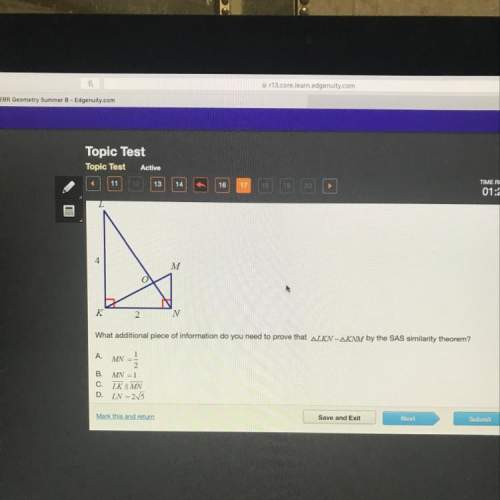P(t) = 250 * (3.04)^t/1.98,
the function above was used to model the approximate population, o...

Mathematics, 29.08.2019 17:20, keke6361
P(t) = 250 * (3.04)^t/1.98,
the function above was used to model the approximate population, of rabbits in the area t years after january 1, 2010. according to this model, what best describes how the rabbits population changed in the area? .

Answers: 1
Other questions on the subject: Mathematics


Mathematics, 21.06.2019 17:00, samantha9430
The magnitude, m, of an earthquake is defined to be m=log l/s, where i is the intensity of the earthquake (measured by the amplitude of the seismograph wave) and s is the intensity of a “standard” earthquake, which is barely detectable. what is the magnitude of an earthquake that is 1,000 times more intense than a standard earthquake? use a calculator. round your answer to the nearest tenth.
Answers: 1

Mathematics, 21.06.2019 20:00, makennahudson94
Someone me! if you’re smart you can solve this!
Answers: 2

Mathematics, 21.06.2019 22:30, 24lfoster
Ascientist places 24 cells in a petri dish. she knows the cells grow at an exponential rate, doubling in number every hour. how long will it take (in hours) for there to be 1100 cells in the dish? time to 1100 cells: 5.51832530 hours how long will it take to reach 110 cells? time to 110 cells : 2.1963972 hours what is the average rate of change in the number of cells between 9 hours and 11 hours? average rate of change: cells per hour what is the instantaneous rate of change after 7 hours? instantaneous rate of change: cells per hour note: you can earn partial credit on this problem.
Answers: 1
Do you know the correct answer?
Questions in other subjects:



Mathematics, 26.05.2021 01:10


Social Studies, 26.05.2021 01:10

Mathematics, 26.05.2021 01:10



Engineering, 26.05.2021 01:10


 .
. to obtain that rate of change at any instant. For example, if we derivate the function
to obtain that rate of change at any instant. For example, if we derivate the function 
 years we evaluate
years we evaluate rabbits/year
rabbits/year




